The end of May

This week: Hedera; Virginia creeper; Tree fall; The end of May; Grow your own;
Don’t Kill a Mockingbird
Once again it’s early morning. The sun has just risen, the study windows are open and I’m listening to the call of a Hoopoe somewhere close by. I’ve seen one flying several times this year, but not close up. There is a Nightingale calling again, very close by too.
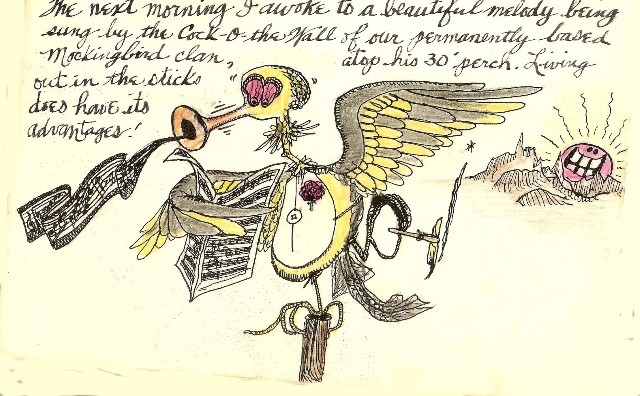
One regular reader, my specialist flight instructor, sent his cartoon drawing of a Mockingbird, from one of his many books, that used to wake him each morning in La Cruces, New Mexico. Thanks Dorcey.
It’s not one of the birds I recall from my time in the Southwestern US. There were vivid blue Scrub Jays, with their raucous calls, and Turkey Vultures, huge birds which used to sit on electric wires on by the sides of rural roads in Temecula, but I had to find a recording of the Mockingbird just to be sure. I could be woken up to that song though. The Jays however, were beautiful but just plain noisy!
The Nightingales are not singing as much here now, as the breeding season advances, but they are still calling, including the one in my Citrus Orchard. It is the males who call. Once they have a mate and the nesting has commenced, they stop.
Hedera
I was removing Ivy this week and had a Nightingale in a nearby fig tree singing its heart out, all the time I was working.
It is about the time of year that the first of the Tiger Mosquitoes appear and start biting, so I was putting the insect screens into the window frames when I noticed the tendrils of Ivy appearing above the frames. I had a look at the north wall and saw that the green stems and leaves were spreading rapidly up the wall.
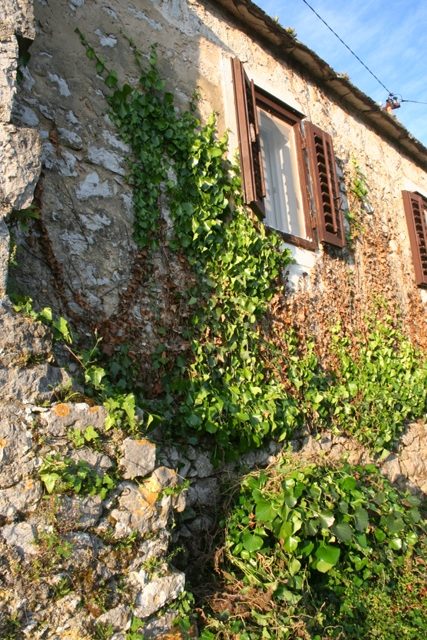
Ivy – Hedera in Latin – is endemic here. It is everywhere and it is a pain. Readily flowering and fruiting, the small round, black fruits are eaten and enjoyed by the birds, especially the Blackbirds, which then spread the seeds. I am constantly finding small plants growing. Pulling them out when they are small is easy. Removing mature Ivy is hard and requires multiple sustained attacks.
Whilst Ivy can look nice when it covers the side of a building, it also causes extensive damage to the building fabric. An accomplished climber, it spreads upwards using specialised roots on every shoot.
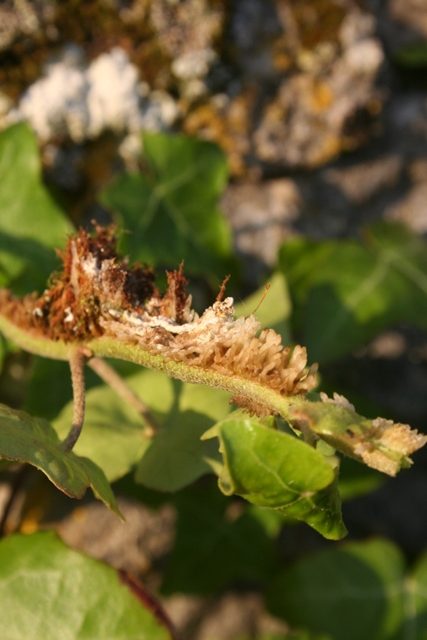
At a microscopic level the roots find pores, gaps and imperfections in walls and extend into them. These roots then expand, corkscrew and dry, locking themselves into the gap. If you pull the Ivy off the wall, it will pull chunks of masonry, mortar and anything else it is attached to with it.

The climbing branches thicken and harden forming a framework, up which more tendrils climb and they are invasive climbers. At least the Ivy is not the Poison Ivy variety.
The north facing wall of my Konoba has had Ivy on it since I bought the property. A few times each year I cross my neighbours garden to get access to it, then clip away the green shoots to reduce it’s vigour. But the weather this spring has made it spread rapidly.
This is another of those enigmas. There is a length of very old and wide wall at the base, upon which the walls of the current building have been added. The walls are of random Ashlar and the mortar is the old lime mortar of a century ago, so this is already soft.
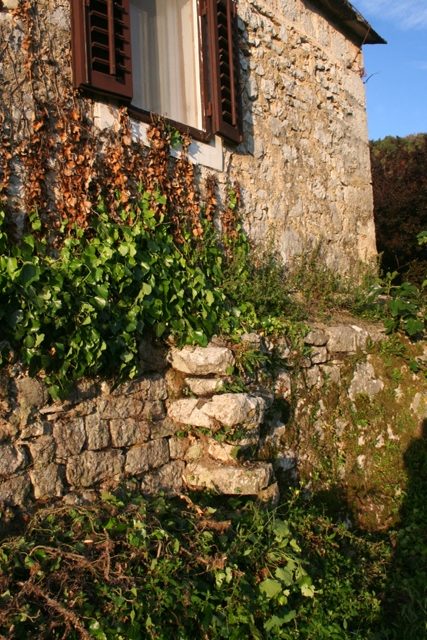
The “new” walls are sixty to seventy centimetres thick – I know, I drilled through them – but the base which includes this much older wall is over a meter thick.
I completely cleared a lower section of wall, the easy bit that was within reach, severing every stem of the climbing menace. The roots had worked their way into the crevices between the old stones and as I pulled them out, so too came pieces of mortar and stone. The whole wall will need to be re-pointed, but this is also a job for when building work eventually starts.
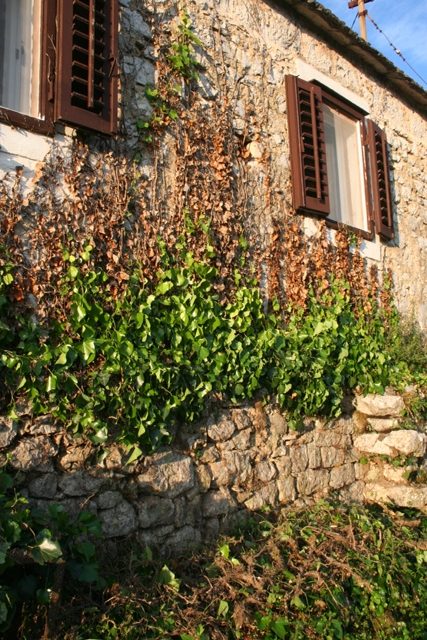
Above the severed tendrils, the ivy will die back. Below, I need to cut and remove them to dry and die.
The soil level of my neighbours vegetable garden is more than a metre higher than the floor level of the Konoba, which makes it damp inside. The foundations will need to be exposed and then waterproofed, to make sure no moisture penetrates through the walls. Equally, the old wall will need to be covered so rain runs off rather than soaking into the step where the old wall and the current wall join.
But for now, stopping the Ivy climbing was the aim. I need to spend a lot more time and get my crack weeder to remove as much of the ivy as I can.
Virginia Creeper
A very different climber is Virgina Creeper Parthenocissus quinquefolia . The plant uses climbing roots on the shoots with sticky pads at the end, rather like the toes of a tree frog.
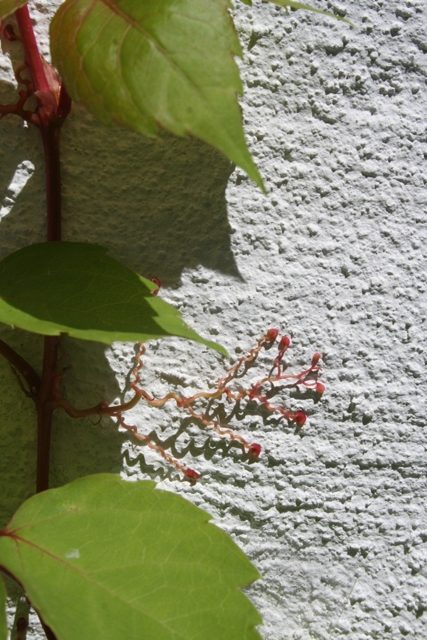
They serve the same purpose as the Ivy roots, anchoring the creeper to what ever it is climbing. However unlike Ivy, the Virginia Creeper doesn’t damage the fabric of buildings and it is easy to pull off a wall, should you ever need to.
I have planted three that I’ve grown from cuttings and they are quickly spreading up the walls of the old cottage. I want to soften the stark white walls, which on two sides don’t have windows. This was the building that I had re-roofed a couple of years ago and the bare walls just look out of place and too new.
Because of the autumn colour of this climber, it is a strategic planting too. The leaves turn to a deep crimson in autumn. At the moment the new stems are red and the big, bright green leaves make a nice contrast. After falling in autumn, the leaves will be added to the compost pile, to improve the soils in the orchards, once they have rotted down.
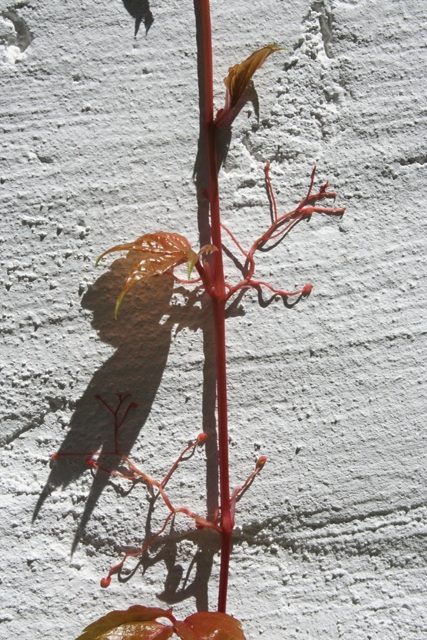
The plant has black berries in winter, which provide a much needed food source for birds. Like the berries on the Ivy, they do tend to germinate wherever they are dropped, but at least I can identify them and either leave or keep them, as I wish.
That is the sort of rambling climber I can enjoy
Tree fall
It’s been a bit stormy this week. We have had more rain and not much in the way of sun and there has been wind. It’s not been the tempest that we experienced earlier in the spring, but it has been windy, none the less.
As the sun came out after another wet day, I started my usual orchard inspection and found that one complete limb of an old plum tress had fallen and was now lying across my new drystone wall. The wall was still upright and was undamaged.
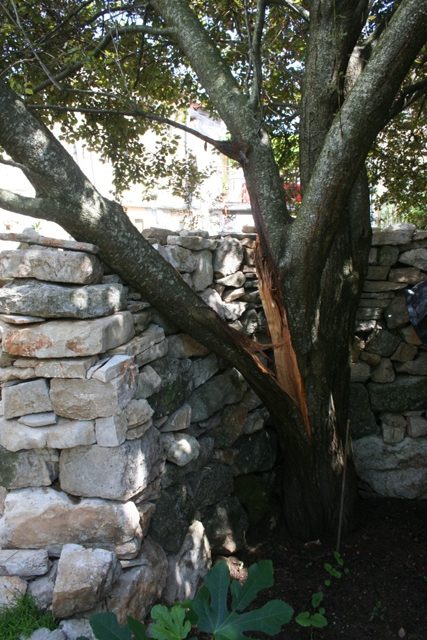
This is a Myrobalan Plum and has small, slightly tart cherry size and coloured fruits. Its bronze leaves are colourful and its dense crown provides a lot of shade.
The tree is old and the trunk splits into two and then two again and looking at where the limb has broken away, water has got into the saddle between two limbs and I suspect has weakened the wood. There is no sign of rot or fungus and the wood is still hard, but the black stain of the water seepage is visible.
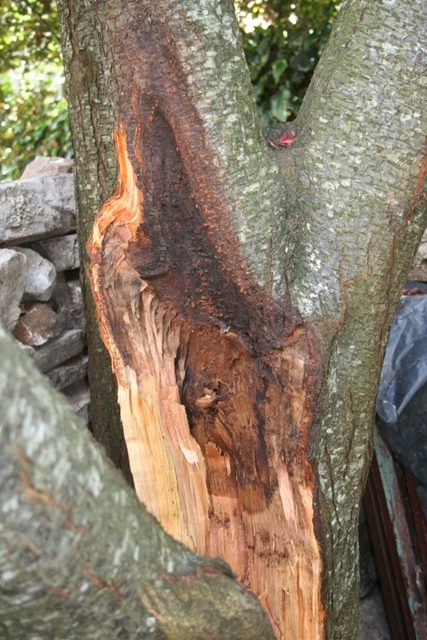
I cut away one low branch so I can use the steps down into the orchard without stooping.

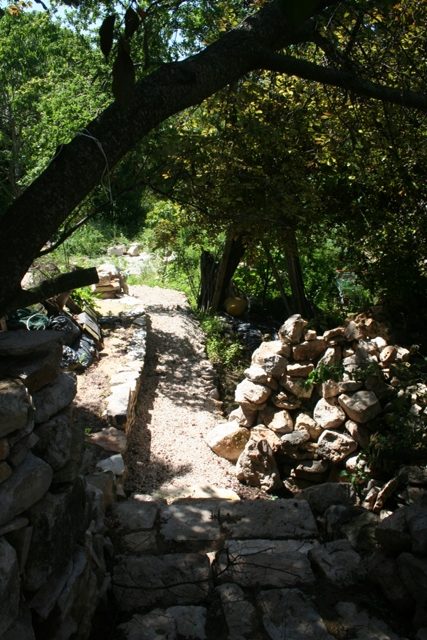
But as the tree is laden with fruit, I will leave the fallen limb, propped up against the wall, until I harvest the fruits in a few weeks time.
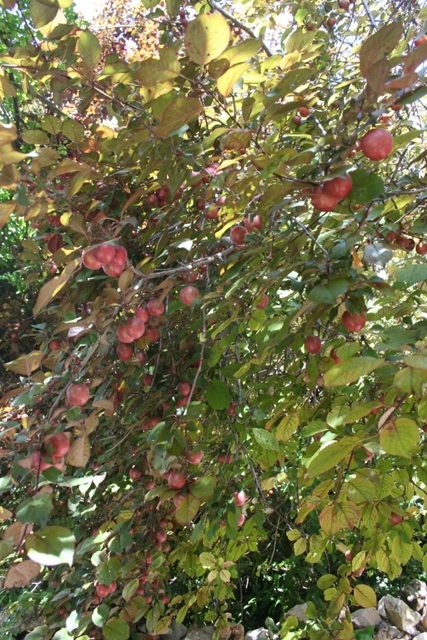
I wonder if the recent unseasonable wet spell has caused the failure, because although gusty, the wind this week was not as strong as we have had it. There is a very good crop of fruit this year and hey are all bigger than in the past, so there is considerable extra weight in the upper limbs.
After harvest, I will have to get the chainsaw out and remove it piece by piece. I have lost about a quarter of the tree.

I have two fruiting suckers that are growing, and which are now a couple of meters tall. I was going to dig them out and give them away, but I think I will keep one, because I suspect that the days of this tree are numbered.
The end of May
I mean the month, not the Prime Minister! It’s been a wet and cool month too. The rainfall has brought us up to just above the average for the start of June, but the temperatures have been depressed, down by an average of five degrees.

Given that this week’s high was in the low twenties, with an average for the week of just 18ºC, whereas in 2015 the average high was 30.2ºC, it gives you some idea. Climate change affects different places differently, but here my water cisterns are full, the soil is moist and everything is growing even if warm sunshine is lacking.
Having said that, this Saturday morning, it is now clouding over, then sun has gone and the air has turned chilly, to the point I think I will change from shorts to trousers when I go into town later. A marked contrast to what it was like at 6am. By lunch time it was raining again.
I have tried to grow many things over the years, but I’ve never tried a to grow a pencil before.
Grow your own
The young son of some friends loves drawing, so when I saw these crayons, I bought a pack for his Birthday.
Called Sprout Pencils, they have been developed by a Netherlands company, to be completely environmentally friendly.
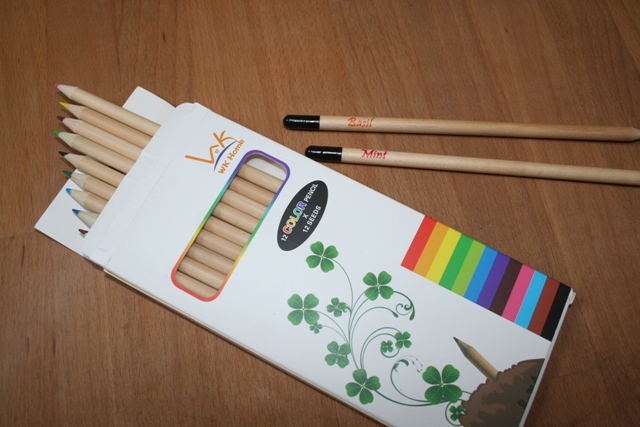
The coloured centre is clay, so it washes away, and when dipped in water, can be painted onto paper. At the blunt end, sealed in a black water soluble capsule are seeds, with a little fertiliser. Once you have used and sharpened the pencil until there is not much left, then you stick the end in a plant pot with soil, add water and wait for the seeds to sprout.
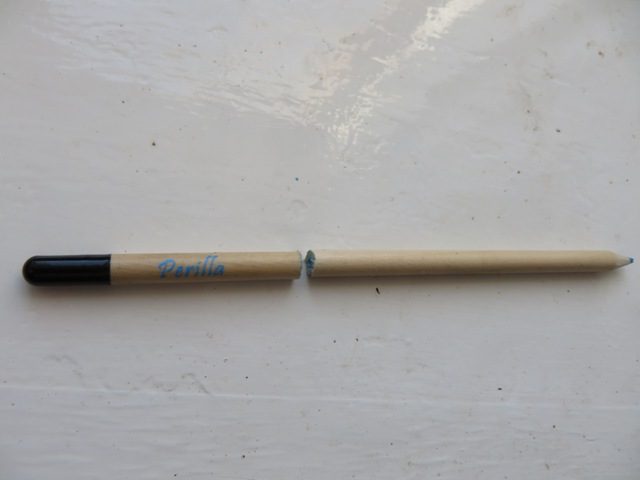
They are useful plants, like kitchen herbs, but also some flowers too. I cut one end off, planted it and have had it in my propagator, but after a week, when the time came to deliver the gift, there was still no sign of growth.
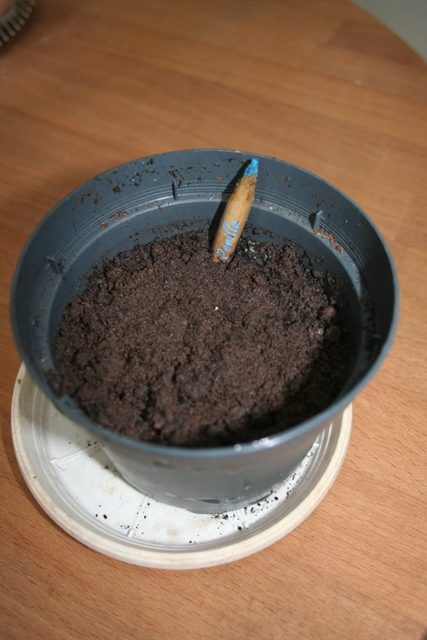
Sometimes you just cannot get seeds to germinate to order! NRC